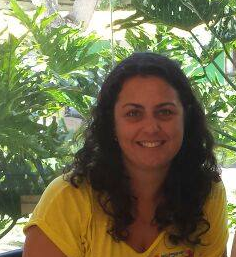
Tayse Feliciano Marques
Linguistics
Federal University of Santa Catarina
tayse_grb@hotmail.com
website

Cristiane Lazzarotto-Volcão
Linguistics
Federal University of Santa Catarina
cristiane.volcao@gmail.com
website

|
Tayse Feliciano Marques Linguistics Federal University of Santa Catarina tayse_grb@hotmail.com website |

|
Cristiane Lazzarotto-Volcão Linguistics Federal University of Santa Catarina cristiane.volcao@gmail.com website |
| Participants: | 2 |
| Type of Study: | longitudinal |
| Location: | Brazil |
| Media type: | audio and video |
| DOI: | doi:10.21415/268D-3X87 |
Marques, T. F. 2020. A unidade mínima de análise, o input linguístico e a gramática universal na aquisição fonológica do português brasileiro: um estudo a partir de dados de gêmeos dizigóticos. Tese (doutorado em linguística), Programa de Pós-Graduação em Linguística, Universidade Federal de Santa Catarina. Florianópolis.
Marques, T. F. 2016. Aquisição do português brasileiro em gêmeos dizigóticos. Dissertação (mestrado em linguística), Programa de Pós-Graduação em Linguística, Universidade Federal de Santa Catarina. Florianópolis.
In accordance with TalkBank rules, any use of data from this corpus must be accompanied by at least one of the above references.
This corpus contains recordings and tranascripts from a pair of twin boys named André and Carlos. The children were recorded 41 times between 1;02,20 and 4;00.19.
Data collection took place in a naturalistic setting, in the children's home. Sessions lasting 15 to 25 minutes were held every two weeks, until the age of 2;0. Between 2;0 to 4;0, the sessions took place every thirty days.
The recordings were made in audio format, using a Zoom H4N digital recorder. Video clips were also recorded through the cell phone camera of an LG G4. All audio and videos files were subsequently uniformized using iMovie and Amadeus Pro editing programs. Between the ages of 1;2 to 1;9, the data collected were mainly due to interactions with children through toys (ball, children's tablet, strollers, dolls, etc.) and children's books, and the researcher focused on recording one child at a time, while the other played, usually in the same environment.
From 1;10 onwards, elicited speech was used by means of pre-selected figures, presented through the computer, in order to serve as a collection guide, since the children spontaneously named them, making, generally, diverse comments regarding the image seen. The use of images, however, made it difficult to make individual recordings, since, for children, viewing and naming the images was considered a game, not accepting to be separated. With this new context, as of 1;10, collections began to occur with both children together. Thus, the researcher accommodated the infants on chairs and presented the figures through the computer.
All productions were entered manually on the Phon software program, and phonetically transcribed by the researcher using the International Phonetic Alphabet (IPA), as well as by a scientific initiation scholarship holder. After comparing the two transcriptions, there was a review made by the supervisor of this work, carrying out a new verification for the words transcribed in different ways by the two transcribers.
For the insertion of the words in the Phon, we had as target of analysis the phonological words, which are the prosodic units identified for having a single primary accent. In this approach, therefore, there is no isomorphism between the phonological word and the morphological word, as in the example of the morphological word ‘beija-flor’ (hummingbird), it consists of two phonological words with two stresses: one in the first syllable of "beija" and another in "flor".